#Miss Universe 1959
Explore tagged Tumblr posts
Text
guys. i need your opinion of this. because i'm genuinely so confused now
what time period is the professor layton series in?? the prequel trilogy and the main trilogy. when are they supposed to be taking place
i could've sworn one of the games (though i forget which) mentions that someone's been to the moon already which would put them at least in the late 60s into the 70s going by our world's timeline... but i don't know maybe space travel was discovered earlier in this universe???
#melonposting#professor layton#it would be useful if i just had a comprehensive timeline of events in this series so it would be easier to plot things out#but just for the sake of argument... just for funzies...#let's say randall disappeared in 1949#then miracle mask takes place in 1967 (18 years after randall's disappearance in 1949)#and then extrapolating backwards - if luke is 11 and hershel is 35 in miracle mask#then luke was born in 1956 and hershel in 1932#luke is 15 when katrielle is born. so she's born in 1971#he and layton go missing ten years later. that'd be 1981#and then it's another eleven years (when she's 21) that kat has her mystery-solving agency and finds her father and everything. so 1992#(which makes the more modern nonsense we see in her game/anime more plausible)#and just for the heck of it. if we're presuming alfendi is 29 at the same time that katrielle is 21 then he's 8 years older than her#putting his birth year somewhere around 1963#and then... hm... luke is 13 in unwound future. and the explosion in which claire died was said to have happened 10 years prior#so when luke was 3 years old... in 1959#and clive was 13 at that time. exactly 10 years older than luke. so he would've been born around 1946#of course it's hard to pinpoint exact dates when you don't know anyone's birthday or what month a game is taking place in#and of course this is making a ton of assumptions#among other things that the moon landing really did take place in 1969 in this universe#i don't even remember which game mentioned the moon landing! which is annoying!#i think it was unwound future so i tried to have it in the ballpark of 1969 (by placing miracle mask two years prior in 1967)#(going off of luke's ages of 11 in miracle mask and 13 in unwound future as reference of the time passage between them)#at the very least i'm sure the moon landing was referenced somewhere within the prequel or main triologies#so unwound future is the last game it could've been mentioned in. so either it takes place in 1969 or an earlier game in the timeline does#but i'm willing to allow for the moon landing to have taken place before 1969 in the laytonverse. their technology is very weird after all#if i place it somewhere earlier in the 60s then the dates can be pushed back. and this fic i'm reading would be totally canon-compliant!#cuz it describes angela & henry 5 years after randall's disappearance being somewhere in the 1940s#which would only be possible if the moon landing takes place earlier for the dates to be pushed back that far#(of course a minor decade discrepancy does nothing to ruin my enjoyment of the fic. i just think it would be nice to make it all work out)
42 notes
·
View notes
Text

Akiko Kojima | Miss Universe | 1959
3 notes
·
View notes
Text
In celebration of the remarkable life and career of Val Kilmer (1959-2025), we're hosting a cross-fandom collection to honor his extraordinary contributions to film and the characters that captivated our hearts and imaginations.
About the Exchange
This event welcomes fanworks of all kinds celebrating Val Kilmer's diverse filmography. Whether you were moved by his portrayal of Jim Morrison, thrilled by his Iceman, enchanted by his Batman, or captivated by any of his other iconic roles, this is your opportunity to share your creativity with fellow fans.
Eligible Fandoms
All Val Kilmer roles and films are welcome, including but not limited to:
Top Gun/Top Gun: Maverick (Iceman)
Batman Forever (Bruce Wayne/Batman)
The Doors (Jim Morrison)
Tombstone (Doc Holliday)
Heat (Chris Shiherlis)
Willow (Madmartigan)
Real Genius (Chris Knight)
The Ghost and the Darkness (John Patterson)
The Saint (Simon Templar)
At First Sight (Virgil Adamson)
Kiss Kiss Bang Bang (Gay Perry)
Alexander (Philip II)
Thunderheart (Ray Levoi)
The Prince of Egypt (Moses, voice)
Any other film from his extensive career
Accepted Fanwork Types
We welcome all forms of creative expression:
Fanfiction: One-shots, multi-chapter works, poetry, scripts, alternative universes, crossovers
Fan Art: Digital art, traditional art, comics, photo manipulations
Poetic Works: Poems, sonnets, haiku, free verse inspired by Kilmer or his characters
Video Tributes: Fanvids, edits, animation
Audio Works: Podfics, song covers, original music
Crafts: Cosplay, props, jewelry, clothing designs
Meta: Character analysis, film essays, retrospectives
Collection Rules
All works must feature a character portrayed by Val.
Please tag appropriately for content warnings.
Both new works and reworkings of previously shared creations are welcome.
Both gen and shippy content are welcomed and encouraged.
Suggestions for Participation
Explore the complex dichotomies in Kilmer's roles: hero/villain, strong/vulnerable, comic/tragic.
Consider crossovers between his characters (What would Doc Holliday say to Iceman? A Crossover between Real Genius' Chris and Top Gun's Iceman, maybe?)
Reflect on the iconic lines and moments that defined his performances
Create "what if" scenarios for his characters' lives beyond the films
Craft poetry inspired by the emotional resonance of his performances
The collection can be found on AO3 at https://archiveofourown.org/collections/Ice_Fest_Exchange/profile.
Add as you finish, and enjoy! Celebrate and have fun!
Timeline
The collection is open as of now, and we ask that all completed works are posted into the collection by July 4th of this year. That said, the collection will remain open all year round, and we invite you to add your tributes to Val as you wish. Val will be missed, and his legacy will endure.
In Memoriam
This collection seeks to celebrate Val Kilmer's enduring legacy as an actor who brought depth, charisma, and unforgettable presence to every role he embodied. Through our creative works, we honor his contribution to cinema and the impact he had on audiences worldwide.
"The only love you keep is the love you give away." - Virgil Adamson, At First Sight
275 notes
·
View notes
Text
ULTIMATE SUPERGIRL READING GUIDE
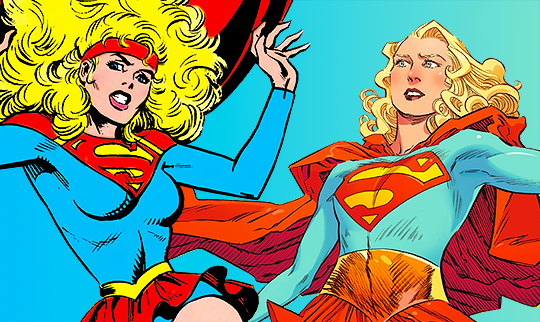
since i've been asked a few times in the past for various reading guides for kara, i thought i'd compile them all into one post for the sake of convenience!
this guide has reading orders for supergirl comics in PRE-CRISIS (1959-1985), POST-CRISIS (2004-2011), NEW 52 (2011-2016), REBIRTH (2016-2021), and INFINITE FRONTIER (2021-present).
if you have any questions at all don't be afraid to shoot me an ask!
for each section bolded comics are required, italicized comics are recommended, and everything else is optional!

[PRE-CRISIS]
ORIGIN AND MIDVALE ERA (NOTE: you'll have to flip to the back of each issue to get to kara's section!) action comics (1938) #252, 258, 267, 276, 278-282, 285, 295, 309-310, 313, 317
STANHOPE COLLEGE action comics (1938) #318, 366-368, 372, 374 world’s finest (1941) #169 adventure comics (1938) #381, 386, 391, 395, 397
K-SFTV REPORTER — SAN FRANCISCO adventure comics (1938) #406-407, 410-415, 419-424
VANDYRE UNIVERSITY supergirl (1974) #1-10
STUDENT ADVISOR — FLORIDA (NOTE: every member of the superfamily has a story in the superman family (1974), so you'll have to flip through to find kara's section!) the superman family (1974) #165, 168, 171, 174, 177, 180, 182 justice league of america (1960) #132-134 the superman family #183, 184-186, 187-189, 191-193, 194, 196-198, 199, 200, 201-202, 203, 204-205, 206-207
ACTRESS — NEW YORK the superman family (1974) 208-210, 211-214, 215-216, 217, 218 superman (1939) #373 (second story titled “an eye (and ear) on the world!”) detective comics (1937) #508-510 the superman family #219-222
THE GREAT DARKNESS SAGA (i recommend this storyline in it's entirety, but kara only appears in the last issue!) legion of superheroes (1980) #290-294
LAKE SHORE UNIVERSITY supergirl (1982) #1-12 (cw: nazi imagery in the brief interlude in #12) supergirl (1982) #13-15 (cw: antisemitism, nazi imagery, depictions of the holocaust.) supergirl (1982) #16-23
LAST APPEARANCES AND DEATH legion of super-heroes (1980) #300-303 dc comics presents (1978) #28 tales of the legion of super-heroes (1984) #314-315 crisis on infinite earths (1985) #4-7
BONUS POST-COIE APPEARANCES christmas with the super-heroes (1988) #2 (last story titled ���should auld acquaintance be forgot”) supergirl (1996) #49, 75-80 solo (2004) #1 (third story titled “young love”) convergence: adventures of superman (2015) #1-2

[POST-CRISIS]
ORIGIN superman/batman (2003) #8-13 (or you can watch superman/batman: apocalypse (2010) instead which I recommend! the art is a lot more tasteful and it's a very faithful adaptation of the comic so you won’t be missing out on anything.)
KARA WITH THE LEGION OF SUPER-HEROES supergirl and the legion of super-heroes (2006) #16-36
LOEB AND KELLY HELL ERA supergirl (2005) #1-5, 9-10, 19 (you don’t have to read any of this since it gets retconned anyway, but if you’re interested in kara’s early characterization, the beginnings of her friendship with cassie sandsmark, or her difficulty fitting in on earth then you’re welcome to read what i’ve provided.)
KELLEY PUCKETT ERA Amazons Attack! teen titans (2003) #47-48 amazons attack! (2007) #3 supergirl (2005) #20 amazons attack! (2007) #4 teen titans (2003) #49
supergirl (2005) #21-22 teen titans (2003) #50, 51-55 supergirl (2005) #25-33
Superman: Brainiac action comics (1938) #866-870
GATES AND IGLE HEAVEN ERA supergirl (2005) #34
New Krypton (new krypton is one of my favorite events and i recommend it in its entirety, but for the sake of brevity I’ll only be listing the issues relevant to kara.) superman: new krypton special #1 superman (1939) #681 adventure comics special featuring guardian #1 action comics (1938) #871 supergirl (2005) #35 superman (1939) #682 action comics (1938) #872 supergirl (2005) #36 superman (1939) #683 action comics (1938) #873
teen titans (2003) #66 supergirl (2005) #37-42
Friends and Fugitives superman: secret Files 2009 #1 supergirl (2005) #43 action comics (1938) #881 supergirl (2005) #45 action comics (1938) #882 supergirl (2005) #46-47
supergirl (2005) annual 1, #48-50
Last Stand of New Krypton adventure comics (2009) #8 superman: last stand of new krypton #1 supergirl (2005) #51 superman (1938) #698 adventure comics (2009) #9 superman: last stand of new krypton #2 adventure comics (2009) #10 supergirl (2005) #52 superman (1938) #699 superman: last stand of new krypton #3 superman: war of the supermen (2010) #0, 1-4
supergirl (2005) #53-57, annual 2, 58-59
END OF SUPERGIRL VOL 5 supergirl (2005) #60-64 supergirl (2005) #65-67

[THE NEW 52]
ORIGIN and SUPERGIRL VS THE WORLDKILLERS supergirl (2011) #1-7
SUPERGIRL and SILVER BANSHEE supergirl (2011) #8-11
SUPERGIRL and SUPERBOY superboy (2011) #6
SANCTUARY supergirl (2011) #12, 0, 13
H’EL ON EARTH superman (2011) #13 supergirl (2011) #14 superman (2011) #14 superboy (2011) #15 supergirl (2011) #15 superboy (2011) #16 superboy (2011) Annual #1 supergirl (2011) #16 superman (2011) #16 superboy (2011) #17 supergirl (2011) #17 superman (2011) #17
SUPERGIRL and POWERGIRL supergirl (2011) #18-20
CYBORG SUPERMAN supergirl (2011) #21-23 action comics (2011) #23.1 supergirl (2011) #24
KRYPTON RETURNS action comics (2011) annual #2 superboy (2011) #25 supergirl (2011) #25 superman (2011) #25
SUPERGIRL VS LOBO supergirl (2011) #26-27
RED DAUGHTER OF KRYPTON supergirl (2011) #28-29 red lanterns (2011) #28-29 supergirl (2011) #30 red lanterns (2011) #30 supergirl (2011) #31 red lanterns (2011) #31-32 supergirl (2011) #32-33
SUPERMAN: DOOMED (this is a whole storyline but I'll only be listing the issues that kara appears in!) superman/wonder woman (2013) #9 action comics (2011) #33 supergirl (2011) #34 superman: doomed (2014) #2 action comics (2011) #35 supergirl (2011) #35
FUTURES END supergirl: futures end (2014) #1
JUSTICE LEAGUE UNITED justice league united (2014) #1-5 justice league united (2014) annual #1 justice league united (2014) #6-10
CRUCIBLE supergirl (2011) #36-40
FINAL DAYS OF SUPERMAN (kara only appears in the issues i've italicized and bolded, but i put all the relevant issues if you wanted to read the full storyline!) superman (2011) #51 batman/superman (2013) #31 action comics (2011) #51 superman/wonder woman (2013) #28 batman/superman (2013) #32 action comics (2011) #52 superman/wonder woman (2013) #29 superman (2011) #52

[REBIRTH]
KARA IN NATIONAL CITY supergirl: rebirth #1
supergirl (2016) #1-8 batgirl (2016) annual 1 supergirl #9-12
supergirl (2016) annual 1supergirl #13-20
world's finest: batwoman and supergirl #1-2
ROGOL ZAAR and THE SINS OF THE CIRCLE the man of steel #1-2, 3-6 supergirl #21-33, #34-36
LEVIATHAN and BATMAN WHO LAUGHS superman: leviathan rising special #1 supergirl #34-36 supergirl (2016) annual 2 supergirl #37-42
HOUSE OF KENT action comics (2016) #1022-1023 action comics (2016) #1024-1028
FUTURE STATE superman of metropolis (2021) #1-2 kara zor el, superwoman (2021) #1-2

[INFINITE FRONTIER]
action comics 2021 annual
WOMAN OF TOMORROW supergirl: woman of tomorrow (2021) #1-8
WORLD'S FINEST batman/superman: world's finest (2022) #2-6, 8, 12
A WORLD WITHOUT CLARK KENT and RED MOON (kara is featured in the back-up story! if you want the full context of this plot i recommend reading the full warworld arc in action comics [action comics #1030-1046, superman: warworld apocalypse #1]!) action comics (2016) #1044-1046, 1047-1049
DAWN OF DC action comics (2016) #1051-1053, 1055-1056 superman (2023) #1-3 power girl special #1 steelworks (2023) #1-3
KNIGHT TERRORS knight terrors: superman (2023) #1-2
DAWN OF DC (continued) action comics: doomsday special (2023) superman (2023) #7 hawkgirl (2023) #4 supergirl special (2023)
NEW WORLDS [this arc starts on action comics #1057—kara doesn't appear in that issue but I recommend reading it for context!] action comics (2016) #1058-1060 action comics 2023 annual
JOURNEY TO FERIMBIA powergirl (2023) #5, 6-7
HOUSE OF BRAINIAC action comics (2016) #1064 superman (2023) #13 action comics (2016) #1065 superman (2023) #14 action comics (2016) #1066 superman (2023) #15
UNIVERSE END action comics (2016) #1070-1081
MISCELLANEOUS RECENT APPEARANCES: superwoman special #1 superman (2023) #21-22
UPCOMING: Supergirl (2025) #1 — written and illustrated by Sophie Campbell, out on May 14th!
726 notes
·
View notes
Text
Secrets In The Flower Garden || L. Alvez
Summary: Luke and fem!reader deny the obvious attraction between them. It isn't until a team, and Derek who was invited, get together at David Rossi's that something happens between them in the flower garden.
cw: no use of Y/N, slight off canon team (Aaron is still the BAU chief), swearing, fluff, suggestive themes, Peneople being your bestie (like she would be), pet names (you platonically call Penelope babes, Luke calls you princesa, you call Luke lover boy, Penelope platonically calls you lovely), bad spanish (google translate), mentions and slight description of a car accident, background character death, first kiss, suggestive and straight foreword themes, barely edited.
Word count: 1959
₊˚⊹♡————— ♡ —————♡⊹˚₊
Luke was laughing at Penelope, she had just given him shit about being the newbie again. He looked around, trying to find you, and when he wasn't able to, he sighed.
"I'm going to head out and get Roxy from her sitter," Luke announced to Penelope, Spencer, and Derek, grabbing his jacket and heading to the door. He waved goodbye to Rossi as he passed the older man, and opened the door to see you standing there.
"Are you stalking me Alvez?" You teased as you lowered your hand, clearly about to knock.
"Nope, it's just the universe telling us we'd be perfect together," Luke shot back with a smile of his own.
"Oh, you believe in fate now?" You challenged him, remembering when he called you out for believing in fate the last time you won a game.
"Not fate, the universe."
"Well, is the universe telling you to let me inside yet?" You asked, raising an eyebrow at him. He quickly moved to the side to let you in, watching as you slipped your shoes off and placed them next to Penelope's. You walked through the entryway and made it to the main room, Luke a few steps behind you.
"You're here, you just missed-" Spencer cut himself off at the sight of Luke behind you.
"Missed what?" You questioned, slightly tilting your head to the side.
"My amazing story about my book club!" Penelope saved Spencer from having to lie, knowing you'd be able to see through it but would never question Penelope about one of her stories. Specifically not when she was overly excited to tell you about it.
₊˚‧ ︵‿ ꒰ ⏝ ୨ ♡ ୧ ⏝ ꒱ ‿︵ ‧˚₊
"We should play some games now that everyone's here!" Penelope announced, her voice extra loud to be heard over the mindless drone of the music in the background.
"What games, babes?" You ask her, moving away from Luke's side to walk over to her, hating having to scream over the music.
"I have a list of games we can play without anything and a list of games we can play but we would need things," Penelope pulled two sheets of paper out of her skirt's pockets.
"Holy shit, you have pockets in that?" JJ rushed over drawing the attention of those around her.
"I do and we have games to play," Penelope's infliction made you raise an eyebrow at her.
"What games do you have on those lists, mama?" Derek questioned Penelope before you could ask about what she meant with her tone.
"Team games! We need to split into pairs," she announced before grabbing Derek by the arm. "Dibs on this one," Penelope claimed Derek as her partner and Luke grabbed your arm.
"The universe is telling me we would be perfect partners for this," Luke told you, a joking lit to his voice.
"Careful there, Alvez or I might start believing you're only making up this universe thing."
₊˚‧ ︵‿ ꒰ ⏝ ୨ ♡ ୧ ⏝ ꒱ ‿︵ ‧˚₊
The team and you had been playing games for the last hour and a half, each time you were paired with Luke. Whether it was because you two wanted to be or because no one else wanted to change partners.
"Let's take a break, I need to use the bathroom," Penelope stood up and left the group. Everyone else went to move and stretch, you stood up and went out the back door. Wanting to cool off after having to sit on Luke's lap for the last few games, your seat being confiscated as an extension of the coffee table for their last card game.
You made it off Rossi's back porch and into the flower garden and sat on one of the benches he had.
"You ok?" Luke's voice startled you, causing him to chuckle.
"Yeah, just needed some fresh air," you told him, scooting over to let him sit with you. You two sat in silence for a moment before you spoke again. "Rossi has nice flowers."
"Do you have a favorite flower?"
"Lilies, why? Did you universe tell you to ask?"
"Possibly."
"Well, Mr. I listen to the universe, are you going to ask why?" You questioned, wanting to talk about it.
"Why?" Luke indulged you.
"My best friend from high school was named Lilian but everyone called her Lily," you told him, your voice slightly reminiscent.
"Was?" Luke looked over at you but you were too busy playing with a loose thread of your shirt to notice.
"We were 19," you started, second-guessing telling him about it but decided to keep going. "We were celebrating her birthday with all our friends, 5 of us all together, driving down a dark back road when Miles, Lily's boyfriend, took his eyes off the road for only a second," you paused, pulling the thread off your shirt to wring it around your fingers. "The other car came out of nowhere, he didn't even have his headlights on. He was on the wrong side of the road and James tried to swerve into the other lane to avoid it but-" you cut yourself off with a shuddering breath. "Lily was in the passenger seat when she got hit head-on. I've always liked Lilies, but sunflowers were my favorite until she died," you looked up and blinked back the tears burning your eyes. After a beat of silence, you looked over at Luke and saw him just looking at you. "God, I'm sorry, what a way to bring down the mood, huh?"
"I'm sorry that happened, truly, I am," Luke told you and you gently shook your head.
"No, I could have just not told you about it," you reasoned.
"I asked, I wanted to know," Luke grabbed your hand and you felt the heat rise to your cheeks at the action.
"Think Rossi will care if I take one of his flowers?" You joked, trying to lighten the mood.
"Probably," Luke answered and you laughed.
"Come on! The man's rich, he probably pays someone to take care of it for him anyway!" You laughed, bracing yourself on Luke's shoulder as you both laughed. You two calmed down and when you did, you realized how close you two were. You froze, staying there and running your eyes over his face, gauging his reaction.
"Kiss her!" You two heard Penelope yell from the porch causing them both to look over at her. "No, don't look at me, kiss each other!" She shouted and you looked back at Luke, who was already looking at you.
"Well, you heard the universe, kiss me," you told him, a smile on your face. Luke mirrored yours with his own before gently sweeping his lips over yours. You took charge and pressed your lips to his with more assured force. The hoots and hollers from your team made you two pull away from each other, you let your head fall onto his shoulder while you laughed. "If I had known all it took was getting you out to Rossi's flower garden for you to kiss me, I would have done it a long time ago," You mused, lifting your head to look Luke in the eyes again.
"It wasn't me and the universe who made you kiss me?" Luke joked.
"Hey, no, you kissed me first. Therefore, I was right," you shot back, amusement written on your face as everyone else walked up.
"No, you kissed me first," Luke argued playfully.
"Fine, Penelope gets to take all the credit," you finalized as the aforementioned woman beamed.
"Hear that, newbie! I get the credit," Penelope laughed and you shook your head in amusement.
"I'll regret this, won't I?" You looked at the blonde who nodded at you.
₊˚‧ ︵‿ ꒰ ⏝ ୨ ♡ ୧ ⏝ ꒱ ‿︵ ‧˚₊
"Good you two are here," Aaron walked out of his office as you and Luke walked into the bullpen.
"Good morning, sir!" You called up before seeing the two stacks of paper he had in his hands. "No, is that what I think that is?"
"The paperwork you and Alvez need to fill out for your relationship," Aaron disclosed and you spun around to look at Luke.
"I don't know if you're worth all that paperwork, lover boy," you joked, watching him put his hand to his heart with a smile.
"You're breaking my heart, princesa," Luke joked and you spun back around.
"I'll take the paperwork, sir," you told him, reaching up to grab it from him. You grabbed Luke's as well before turning back to face him and sat down on the top of his desk. "Fill it out because you might not be scared to file paperwork late, but I am and I'm not letting some stuffy higher-up tell me that we can't date because we didn't file the proper paperwork," you handed the paperwork to Luke.
"Whatever you want, princesa," Luke smiled at you and pressed a kiss to your lips.
"No PDA with the newbie," Penelope joked, walking over and holding a folder.
"Tell me that's not more paperwork, babes," you groaned, looking back at Luke.
"Nope, just the list of predictions I made for this year. As well as the list of bets on it," Penelope explained and you got excited.
"I forgot about that! Why's it out?"
"Luke and you both owe me $20," Penelope grabbed her list of bets and on number 6, you both bet $20 that you wouldn't end up together.
"You bet against us?" You looked over at Luke, pulling the bill out of your purse.
"You did too," Luke countered, pulling his own money out.
"Yeah because someone was talking about going on dates with women," you pointed out, narrowing your eyes.
"Well someone else, was talking about having a boyfriend," Luke narrowed his eyes at you, and you shook your head.
"I never said anything about having a boyfriend," you tilted your head, narrowing your eyes just a tad bit more.
"I overheard you and Emily talking about it," Luke challenged, his eyes narrowing a bit more too.
"Oh, I know this one!" Penelope interrupted the stare-down you and Luke were having. "Luke was talking about dates because he was trying to distract himself from his crush on you," Penelope looked from you to Luke. "And she was talking about having a boyfriend because Emily was telling lovely here, that pretending to have a boyfriend would make you jealous enough to ask her out, newbie," Penelope cleared the air and you smiled at the memory of Emily vehemently trying to get you to pretend to have a boyfriend.
"Hm, guess you're off the hook, but only because you had a crush on me," you joked, sitting down at your desk finally.
"I don't know if I should let you off the hook, you tried to make me jealous," Luke joked back, causing you to whip your head in his direction.
"Luke Alvez, you better," you threatened, holding a pen in his direction.
"Or, what, princesa," Luke raised his eyebrows at you.
"O no me voy a casa contigo y tendrás que lidiar con la situación que tendrás después de que te moleste todo el día tú solo," you told him with a smile as his eyes widened.
Or I'm not going home with you, and you'll deal with having to handle the situation you'll have after I tease you all day all by yourself
"You're forgiven," Luke held his hands up and you laughed, winking at Penelope as she left the bullpen, likely to try and figure out what you said via the security cameras and some translation app.
"Paperwork, lover boy," you reminded him, turning back to your own.
₊˚ ‿︵‿︵‿︵୨୧ · · ♡ · · ୨୧‿︵‿︵‿︵ ˚₊
Like this story? Here's my masterlist
38 notes
·
View notes
Text
A Photo of Nancy Pelosi, Rediscovered Decades Later
In 1963, the politician Thomas D’Alesandro Jr. submitted a photo to appear with The New York Times’s announcement of his daughter’s engagement.

When the daughter of Thomas D’Alesandro Jr., a prominent politician in Baltimore, got engaged in 1963, the family sent her photo to The New York Times to accompany an engagement announcement in the Society pages. That 23-year-old woman, Nancy D’Alesandro, would become better known in the decades that followed by her married name: Nancy Pelosi. Both Ms. Pelosi and her father, Mr. D’Alesandro, a Democrat who served as the mayor of Baltimore from 1947 to 1959, have files in the Morgue, The Times’s repository of newspaper articles, photographs and other archival materials. When searching for Mr. D’Alesandro’s photo file, the caretaker of the Morgue found a file for Nancy D’Alesandro. That’s where the engagement photo was stored. The photo was published on June 1, 1963, above an announcement with the headline “Miss D’Alesandro Is Future Bride of Paul F. Pelosi.” Mr. Pelosi, per the announcement, was a graduate of Georgetown University and worked for the First National City Bank of New York (now Citibank). Ms. D’Alesandro, the announcement said, was a graduate of Trinity College (now Trinity Washington University) in Washington, D.C.
I always picture Nancy Pelosi as the elderly matriarch of the House of Representatives. It's fascinating for me to see her as a young woman, with a circa 1963 bouffant hairdo.
It's interesting that this photo was initially lost because it was filed under "Nancy D'Alessandro." No one back in 1963 probably could have pictured young Nancy becoming the first woman Speaker of the House, a position she would hold for a total of 8 years (from 2007-2011, and from 2019-2023). Nancy has also been viewed by many as one of the most formidable Speakers in American history.

#nancy pelosi#former speaker of the house#1964 photo#first woman speaker of the house#engagement announcement#the new york times#john otis
41 notes
·
View notes
Text
DOCUMENT HF-63-2503 23rd November 1963
To [REDACTED] I am writing this report as a follow up of our meeting this morning, as I believe the magnitude of this week’s events will require proper documentation and filing once complete. As previously stated, our deployment in Northern France began in September, following several police reports of hikers going missing in dense woodland close to the town of [REDACTED]. Following the 1959 acquisition of Asset #4, we have implemented a protocol to investigate any missing person’s case above a bodycount of four individuals within an area of wilderness. An Extraction Team was dispatched to the location in early October, under the guise of a university research team from Paris. Extraction Team Leader Castle was tasked with setting up a perimeter, and local law enforcement were engaged to keep civilians away from the area. Following an intense investigation of the woodland in question, the team were able to uncover the asset’s hiding place. According to photographs of the site, she had sequestered herself inside the ruins of an abandoned church. I already have our Archival team working to assess whether this site was deconsecrated at any point in time, or whether this puts into question our current beliefs regarding vampirism and what is deemed “holy” iconography. Asset was covered in blood when the Extraction team found her. It appears she had acquired a sixth victim on the night of our arrival. Said victim was not dead, and had not been forced to drink her blood. They have been placed under close medical supervision, and will be transferred to our medical centre in Amsterdam for examination. We believe they will require nothing more than the typical NDA and debriefing once physically recovered. The asset has been successfully restrained by the Extraction Team, and I have begun the paperwork for her transportation to Whitby. Due to her sentient state, we suspect she will require additional holding measures within the archives. Archivist Jenkins has assured us that she has begun preparations, but I wish to stress the importance of this acquisition. This Extraction may be exactly the breakthrough we’ve been looking for in our research of the Undead. We cannot let this opportunity pass us by. Yours, [REDACTED]
Acquisition Letter transcribed for the Whitby Archives
#the holmwood foundation#the holmwood foundation podcast#extract#extracts#character extracts#this one was very fun to write#asset 6
43 notes
·
View notes
Note
do you have any favorite underrated/short flashfamily comics? because i feel like i’ve read basically everything flashfamily that’s post crisis! 😭
If you've read everything then I might not be able to help you much because I've also read everything, but here are a collection of comics that may have slipped by you or are worth looking over again.
Legionnaires Annual #3
This is a comic that focuses entirely on Jenni Ognats as she navigates through time post-Impulse (1995) #12 to get back home. It doesn't involve many other speedsters, but it does focus entirely on her and it is worth the read. The best part is - it is VERY self contained so anyone can pick this up and jump in and read a fun little story about a brown speedster girl finding her way back home while being yanked around by Time Trapper.
Adventures in the DC Universe #13
Did you know Impulse has a band in the DC World named after him and they are on the path to fame? This issue is a delight as Bart meets them and helps solve a mystery with J'onn.
The Flash: Rebirth
You may have already read this but it's always worth picking up. Barry Allen is back, and the whole Flashfam is off-balance as a result. Bart makes a very valid point; Why is that only Barry could come back? Well, grandfather has only one option now, get Max back.
The Flash: Our Worlds At War
A tie-in comic to the larger OWAW event that shouldn't be missed.
Flashpoint: Kid Flash Lost
Yes, Bart dies at the end and stays "dead" until he comes back in Rebirth HOWEVER this is probably the BEST Bart-centric story that was ever written with him as Kid Flash by an author that had deep love for Impulse. It's a bittersweet goodbye letter to his character.
Impulse Plus
Impulse + Gross Out is a single issue that might have been missed in a primary Impulse (1995) read through that shouldn't be missed and is worth a read. Highlights include Max going on a brief rant about colonizing white people.
The Flash: 80 Page Giant #1 & #2
Various Flashfam stories always worth checking out.
The Flash (2010)
Geoff's Barry solo welcoming him back into a world he is not sure he wants to be a part of and yet must is a short series worth a read. If anything, art by Manapul is beautiful to look at.
The Legion of Super-Heroes in the 31st Century #15
This series is the tie-in comics to the animated series Legion of Super-Heroes (highly recommended) and in this elseworld Bart exists! This issue is all about him as Chuck, Luornu and Querl discover him in a virtual reality server and help him save the lives of the AIs that live there. Also a little love-letter to Bart with nods to his friendship with Querl in the main comics.
The Flash (1959)
Nothing wrong with starting from the beginning and reading the series that saved DC. Yes, I know this is NOT short - but if you've read everything post-Crisis, why not read pre-Crisis?
I can't think of anything else atm that might be something easily skipped and short.
9 notes
·
View notes
Text
THIS DAY IN GAY HISTORY
based on: The White Crane Institute's 'Gay Wisdom', Gay Birthdays, Gay For Today, Famous GLBT, glbt-Gay Encylopedia, Today in Gay History, Wikipedia, and more … December 20



1785 – The last known execution for sodomy in the United States occurs in Pennsylvania. Joseph Ross is the victim.


1904 – The American actor and director Albert Dekker, who died in unusual circumstance in 1968, was born in Brooklyn, New York, as Albert Ecke. His films include the classics The Man in the Iron Mask (1939), Beau Geste (1939), The Killers (1946), The Sound and the Fury (1959), Suddenly, Last Summer (1959), and The Wild Bunch(1969). He replaced Lee J. Cobb as Willy Loman in the original production of Arthur Miller's Death of a Salesman, and during a five-year stint back on Broadway in the early 1960s, he played the Duke of Norfolk in Robert Bolt's A Man for All Seasons.
Dekker appeared in some seventy films from the 1930s to 1960s, but his four most famous screen roles were as a mad scientist in the 1940 horror film Dr. Cyclops; as a vicious hitman in the The Killers; as a dangerous dealer in atomic fuel in the 1955 film noir Kiss Me Deadly; and as an unscrupulous railroad detective in Sam Peckinpah's western The Wild Bunch, which would be his last screen appearance.
Dekker's off-screen preoccupation with politics led to his winning a seat in the California State Assembly in 1944. Dekker served as a Democratic member for the Assembly until 1946. During the McCarthy era he was an outspoken critic of U.S. Senator Joseph McCarthy's tactics; to avoid being blacklisted he spent most of the period working on Broadway rather than Hollywood.
For his contribution to the motion picture industry, Dekker has a star on the Hollywood Walk of Fame at 6620 Hollywood Boulevard.
On May 5, 1968, Dekker was found dead in his Hollywood home after failing to answer numerous phone calls for two days. Although money and camera equipment were missing, there were no signs of forced entry. He was found naked, kneeling in his bathtub with a noose wrapped around his neck that was looped around the shower's curtain rod. He was also handcuffed, blindfolded, gagged and had "make me suck" and "slave" and "cocksucker" scrawled on his body in red lipstick.
The police toyed with a theory that Dekker was a closet homosexual who practiced his eccentricities very discreetly with anonymous male prostitutes, and that this time, something had gone wrong and the frightened partner had quietly let himself out. The coroner's ruling was accidental death by autoerotic asphyxiation.


1955 – Frank Kameny is fired from his job as an astronomer in the United States Army’s Map Service in Washington, D.C. because of his homosexuality. A few days later he is blacklisted from seeking federal employment. These events spur Kameny into being a gay rights activist.


1962 – Doug Wright is an American playwright, librettist, and screenwriter. He received the Pulitzer Prize for Drama in 2004 for his play, I Am My Own Wife.
A Texas native, Wright was born in Dallas. He was the target of schoolyard teasing and playground attacks throughout elementary school. Overweight and awkward as a child, and not athletically inclined, he was routinely taunted by classmates as a "sissy," a "queer," and worse.
Despite the torments he was forced to endure in elementary and middle schools, once he entered Highland Park High School, outside of Dallas, Wright found acceptance in the theater department.
He entered Yale University in the fall of 1981. He achieved early success while still an undergraduate, when one of his first works, The Stonewater Rapture (1983), a two-character play about teenage sexuality and religious repression in a rural Texas town, was performed to acclaim at Scotland's Edinburgh Festival Fringe in August 1984.
The works of Doug Wright often focus on the unconventional lives of society's outsiders. Among these are the iconoclastic artist Marcel Duchamp in Interrogating the Nude; the Marquis de Sade in Quills; Charlotte von Mahlsdorf, an East Berlin transvestite who survived persecution by both the Nazi and Communist regimes, in the Tony Award and Pulitzer Prize-winning I Am My Own Wife; and "Big Edie" and "Little Edie" Bouvier Beale, two eccentric American aristocrats who ended up living in squalor, sharing a once-elegant mansion, in the musical Grey Gardens, based on the cult classic documentary film of the same name.
Wright also helped adapt the animated Disney film The Little Mermaid into a Broadway musical.
He currently lives in New York City with his husband/partner, the singer-songwriter David Clement.


1980 – According to recently released stats, at least one person is physically assaulted in New York City each day because they are gay or lesbian.


11 notes
·
View notes
Text
Broadway Divas Tournament: 2A
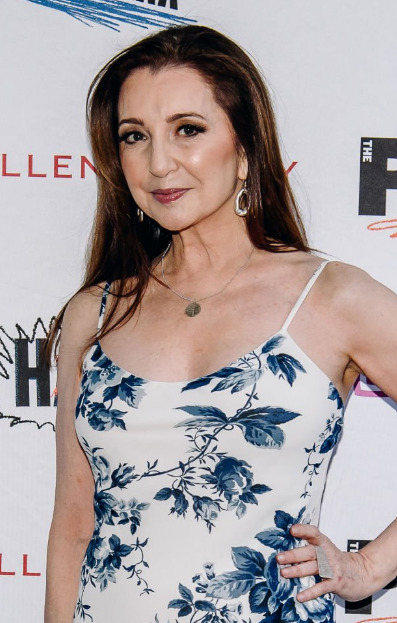
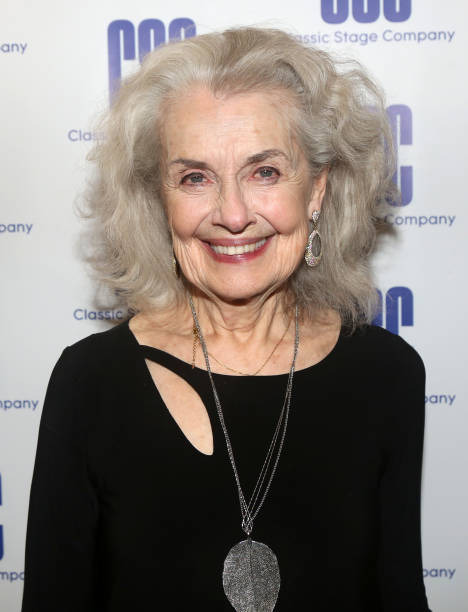
Donna Murphy (1959) “DONNA MURPHY (Anna) received the 1996 Tony Award, as well as Drama Desk and Outer Critics Circle nominations for her performance in The King and I. She also received the 1994 Tony and Drama Desk Awards for her portrayal of Fosca in Stephen Sondheim and James Lapine’s Passion. Last summer she was featured as Dorothy Trowbridge in Mr. Lapine’s Twelve Dreams at Lincoln Center (Drama Desk nomination). Other Broadway Credits include: Edwin Drood in The Mystery of Edwin Drood, The Human Comedy, and They’re Playing Our Song. Off-B’way: The Whore in Michael John LaChuisa’s Hello Again (Drama Desk nom.), Rose in Song of Singapore (Drama Desk, Outer Critics Circle noms.), Hey Love; The Songs of Mary Rodgers, Privates on Parade, Showing Off, Birds of Paradise, A…My Name is Alice, Little Shop of Horrors. Regional work includes Miss Julie (McCarter), Pal Joey (Huntington), Williamstown, Portland Shage Co. and Goodspeed. She made her feature film debut in Jade, and co-stared (sp) in “Someone Had to Be Benny” for HBO. Other TV includes: Francesa Cross on Stephen Bocho’s “Murder One,” “Law & Order,” “A Table at Ciro’s” (PBS Great Performances), “Another World” and the American Playhouse Production of Passion. Ms. Murphy can be heard on the original cast recordings of Passion (Grammy Award), and Hello Again, and is featured on Leonard Bernstein’s New York on Electra/Noneshuch.” – Playbill bio from The King and I, December 1996.
Mary Beth Peil (1940) "MARY BETH PEIL (Anna Leonowens), before joining the 1982 Los Angeles production of The King and I, received national acclaim for her television portrayal of Alma Winemiller in Lee Hoiby's opera Summer and Smoke (based on the Tennessee Williams play), produced by PBS and the Chicago Opera Theatre. As a member of New York's Theatre for a New Audience she has apperaed in many productions of Shakespeare. A Graduate of Northwestern University and a First Prize winner of the Metropolitian Opera Auditions, Mary Beth has been featured in opera and musical theatre with such companies as The Metropolitan Opera National Company, the New York City Opera, the Lake George Opera and the Minnesota Opera. She has appeared as soloist with the New York Philharmonic, Honolulu Symphony, Buffalo Philharmonic, the New York Young Concert Artists and the Cincinnati Area Artists Series. Favorite musical theatre roles that she has performed include Rosabella in Most Happy Fella, Magnolia in Show Boat and Kate in Kiss Me, Kate." - Playbill bio from The King and I, March, 1985.
NEW PROPAGANDA AND MEDIA UNDER CUT: ALL POLLS HERE
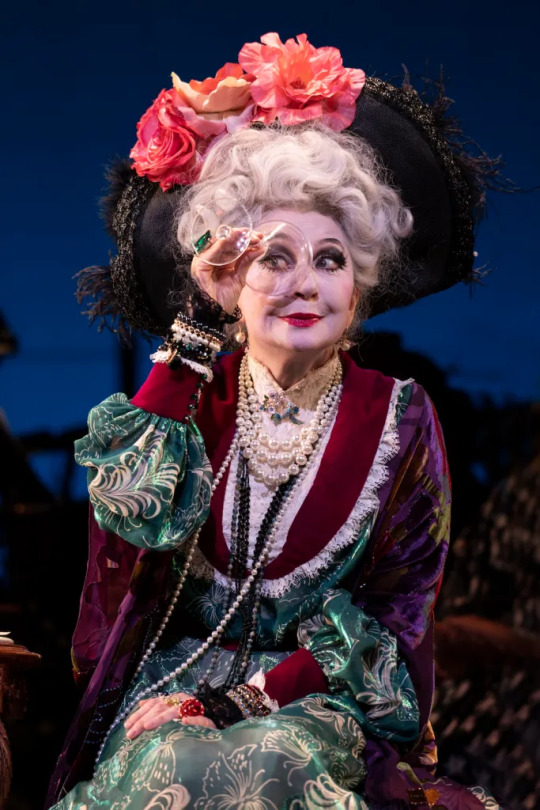
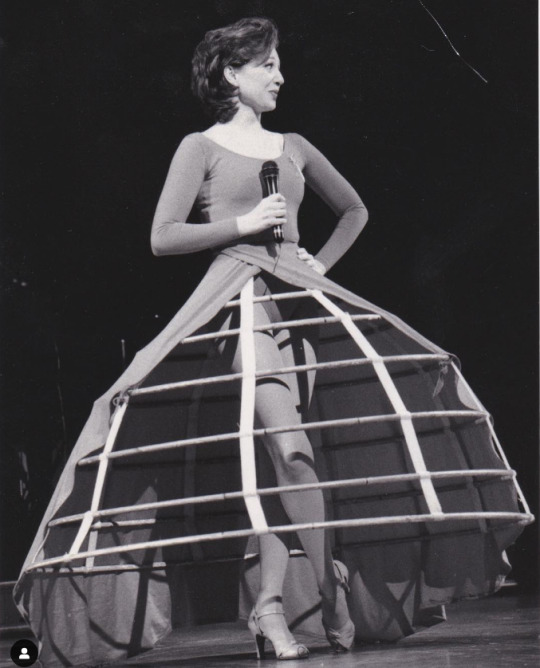
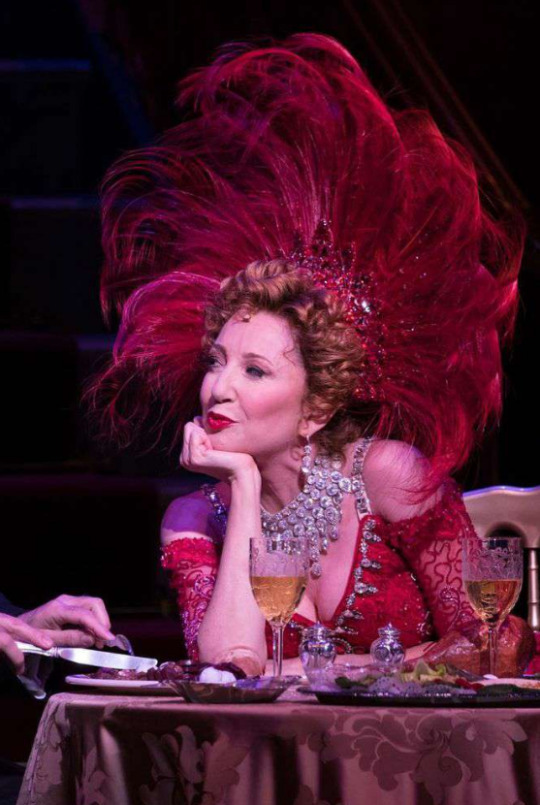
youtube
"We have Donna Murphy as Dolly. We have Donna Murphy as Aurelia. What are we doing to get Donna Murphy in a Mame revival so she can hit the Jerry Herman trifecta? I need this woman back on a stage immediately and genuinely, I cannot tell you how much money I'd be realistically willing to shell out. And on a more personal note? What do I have to do to get Donna Murphy to look at me like she wants to devour me whole? The things I want to do to this woman... She has chemistry with every single person she crosses paths with. I need her carnally."
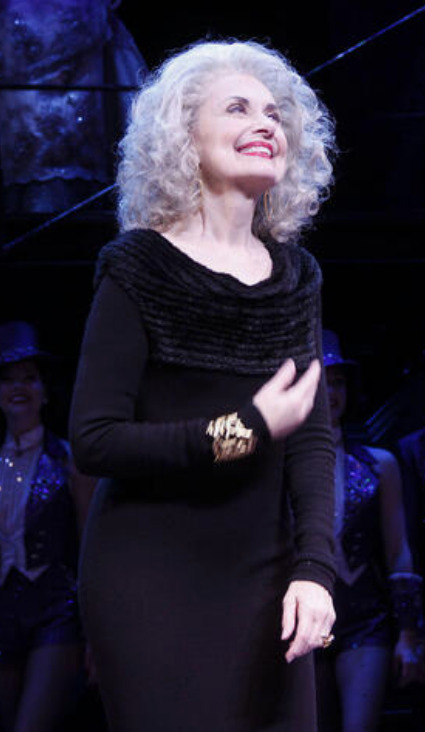
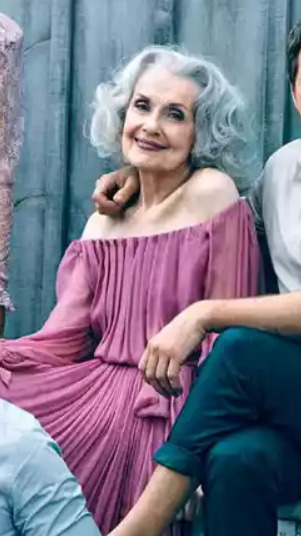
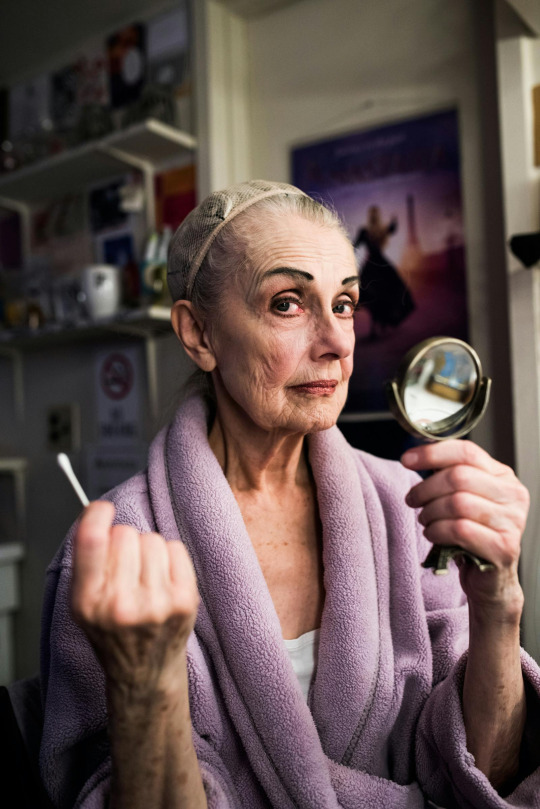
youtube
"Mary Beth Peil's hair deserves a Tony Award of its own. She started going grey almost twenty years ago and never looked back. A grey-haired octogenarian who's actively out here being hot and sexy and showing skin is quite possible one of the hottest things in the world. Let me reiterate: I want to fuck this old woman."
#broadwaydivastournament#broadway#broadway divas#tournament poll#musical theatre#donna murphy#mary beth peil#round 2a
24 notes
·
View notes
Text
O'Connor reads at Vanderbilt University in 1959

Flannery O'Connor is a favorite author of mine, and I recently watched Ethan Hawke's wonderful film Wildcat which is based on the life and fiction of O'Connor -- so, in celebration of the film and Miss O'Connor, here she is reading one of her most famous stories A Good Man Is Hard to Find.
10 notes
·
View notes
Text
Let's Read Peanuts (Fat-shaming Charlie Brown since 2023) – February 1959
There are lots of great strips I just don't have room to comment on. I strongly encourage everybody to read along at the official GoComics page or by purchasing the Fantagraphics hardcover collections.
February 1, 1959

There are very few situations where I’d murder a child but might be one of them.
February 6, 1959

~Somewhere off-screen a wine glass shatters.~
Have I mentioned yet how much I love that poker-faced stare Charlie Brown does when he sees something deeply concerning? It’s such a wonderfully understated expression.
February 9, 1957

Eh. That’s just what it’s like to be over thirty. You get used to it.
February 11, 1959

Honestly? I’m not a fan. Though I do think it’s kind of remarkable that Tennessee Ernie had a voice that sounded like it should have been fictional.
youtube
February 15, 1959

They’re only surprised because the snowman isn’t on fire.
February 19, 1959

Charlie Brown is like “Nope! I am not getting stabbed by a strung-out kindergartner over this.”
February 22, 1959

See, it’s moments like this that I think are missing from modern Peanuts media. Charlie Brown may be the universe’s punching bag but a tiny ember of defiance still burns within his heart.
February 25, 1959

I’d argue that when you do math at a high enough level the answers ARE a matter of opinion.
#peanuts#comics#charles schulz#comic strips#peanuts comics#charlie brown#lets read#snoopy#lucy#Patty#Violet#Linus#Tennessee Ernie#Youtube
6 notes
·
View notes
Text
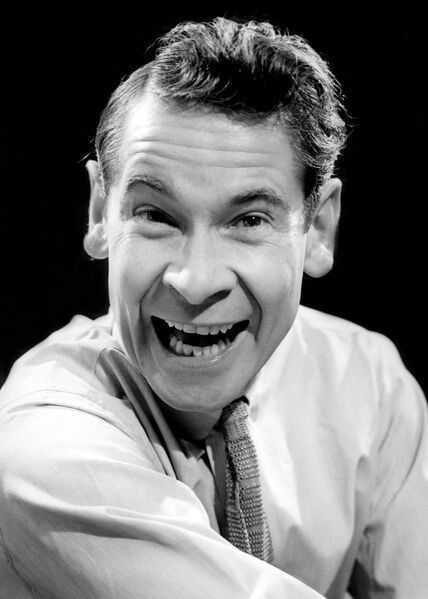
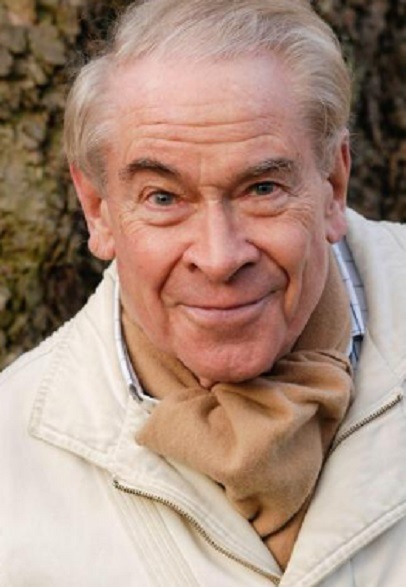
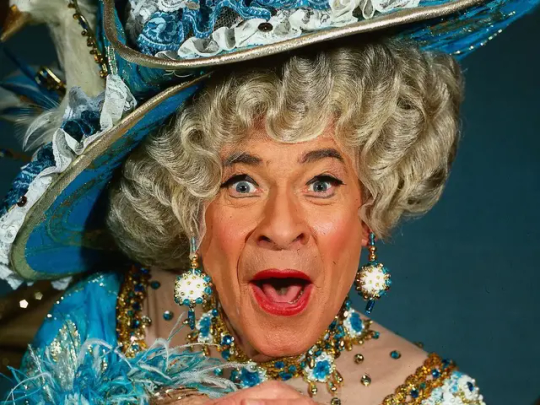

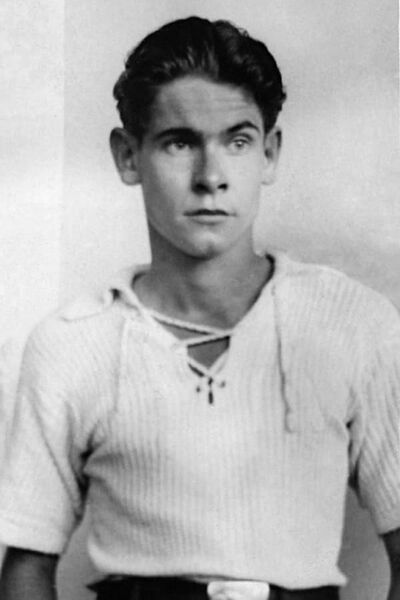
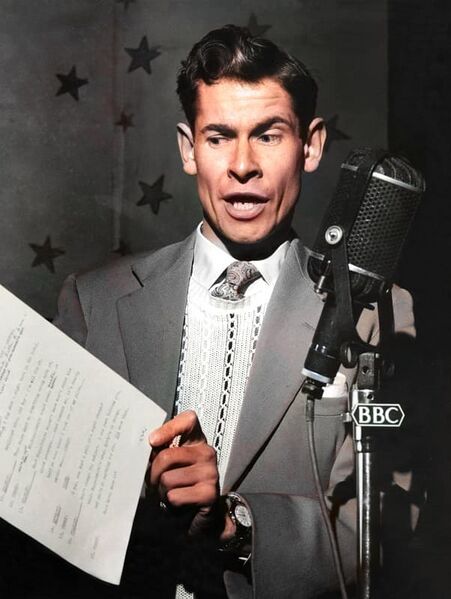
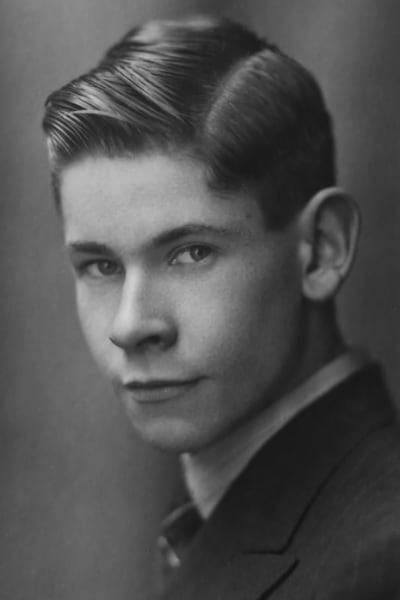
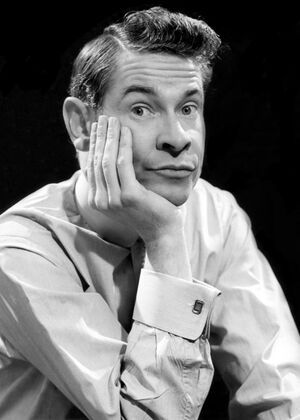
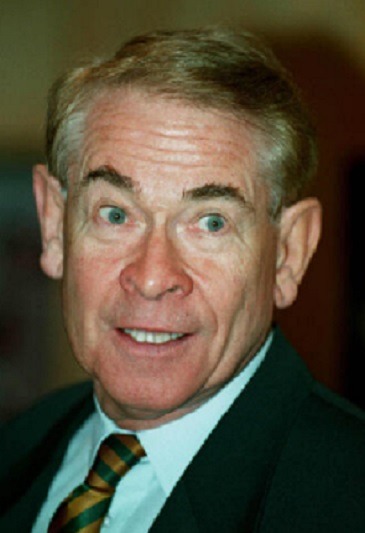
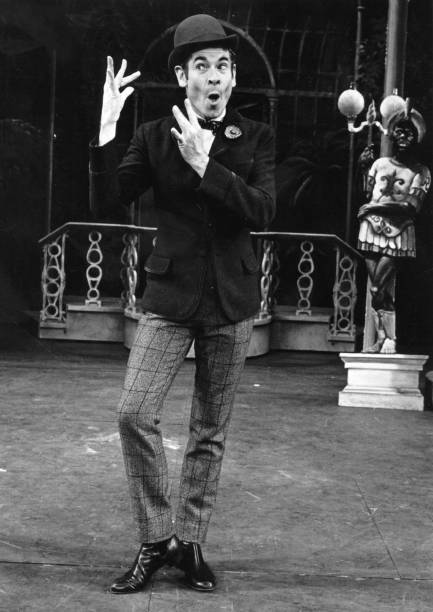
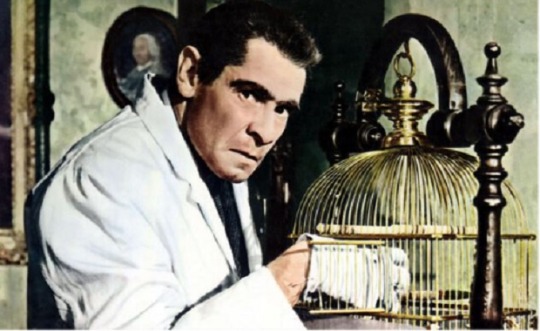
Happy 98th birthday Scottish comedy great Stanley Baxter born in Glasgow May 24th 1926.
Stanley was a child actor who started his career in radio on the Scottish edition of BBC Children’s Hour.
After gaining a degree at the University of Glasgow, he joined the entertainment services during national service where he met comedy actor Kenneth Williams and film director John Schlesinger. Their influence persuaded him to become a performer rather than a teacher.
He returned to Glasgow and spent the next three years at the Citizens Theatre, where he was highly successful, and later appeared in panto with Jimmy Logan. He left Scotland in 1959 to work in television.
He won a Bafta for light entertainment in 1959, for co-hosting the satirical sketch show On the Bright Side. He won two years running, in 1973 and 1974, for The Stanley Baxter Picture Show, and again in 1981 for The Stanley Baxter Series.
Some of his best-loved comedy sketches include Parliamo Glasgow, in which the Glaswegian dialect was presented as a foreign language. It included phrases such as “Izat a marra on yer barra, Clara?” and the uniquely Glaswegian word “Sanoffy”, as in “Sanoffy cold day”.
He remained a favourite of the Scottish panto circuit, often playing the gloriously costumed dame alongside Angus Lennie, Jimmy Logan or Ronnie Corbett, until he retired in 1992.
In 1994 he returned to radio, appearing in plays and sitcoms. In 1997, he was honoured with a lifetime achievement award at the British Comedy Awards. The Stanley Baxter Playhouse ran on Radio 4 from 2006 until 2014.
Even though he retired from TV comedy some 30 years ago, Stanley Baxter continues to hold a special place in the viewing nation’s heart.
He eats well, likes a glass of wine and enjoys a quiet domesticated life. Well into his 80s he was still cycling and swimming. Even when he was in the public eye, he shunned personal publicity, rarely doing interviews or appearing on chat shows.
In his retirement he has written an autobiography but refuses to allow it to be published until after his death, not apparently because it contains any hugely scandalous stories of his celebrity friends, but because he didn’t fancy schlepping round the country doing promotional appearances, press interviews and book signings, let’s hope it is a good few years before it is released then!
A widower since 1997, he says he doesn’t find it difficult to fill his days. “You wonder how you ever had time to work,” he says.
“I miss talking to actors. I can relate to actors better than real people. I have so few friends left. "I suppose I’m a bit of a loner. I’m not the kind of person to drop in on the neighbours.”
In 2020 Stanley in an authorised biography, The Real Stanley Baxter told for the first time of his struggles to come to terms with his sexuality, his efforts to keep the fact that he is gay secret and the effect his troubled marriage had on his life.
The book charts the career of Baxter, who was born in Glasgow in 1926, from his early days as an entertainer in the Army, where he met Kenneth Williams. The Real Stanley Baxter explores the complex relationship with his wife Moira, his early sexual encounters as a teenager, and the strenuous efforts he made to maintain his privacy in later life, including taking legal action over the publication of the diaries of actor Kenneth Williams, a long-time friend, after he had passed away.
Baxter described his discomfort with his homosexuality in the book, writing: "Anybody would be insane to choose to live such a very difficult life. There are many gay people these days who are fairly comfortable with their sexuality, fairly happy with who they are. I’m not. I never wanted to be gay. I still don’t."
If you want to know more about Stanley I recommend watching the feature length documentary, Stanley Baxter's Best Bits - and More, it’s on 5 and you don’t have to sign in to watch the show, it’s just over an hour long so settle down with a cuppa before viewing. https://www.channel5.com/show/stanley-baxter-s-best-bits-and-more
13 notes
·
View notes
Text
Nishnaabe Nagamonan
Disclaimer: Some works deal with historical wrongs, Missing and Murdered Indigenous Women and Girls, colonialism, and residential/boarding schools. Exercise caution.
Kateri Akiwenzie-Damm is a member of Saugeen Ojibway First Nation. Akiwenzie-Damm has served as Poet Laureate for Owen Sound and North Grey. In 1993, she established Kegedonce Press, a publishing house devoted to Indigenous writers. She has also authored Without Reservation: Indigenous Erotica.
Works: (Re)Generation, My Heart is a Stray Bullet.
Marie Annharte Baker is a member of Little Saskatchewan First Nation. Annharte's work concentrates on women, urban, Indigenous, disability, and related topics. She critiques life from Western Canada. After graduating with an English degree in the 1970s, she became involved in Native activism and was one of the first people in North America to teach a class entirely on Native women.
Works: Indigena Awry, Miskwagoode, Exercises in Lip Pointing.
Lesley Belleau is a member of Garden River First Nation. She is noted for her 2017 collection Indianland. She has an MA in English literature from the University of Windsor and is working on a PhD in Indigenous Studies from Trent University.
Works: Indianland.
Kimberly M. Blaeser is an enrolled member of the White Earth Reservation. Blaeser served as Wisconsin's Poet Laureate from 2015-2016. She is a professor of English at the University of Wisconsin-Miluwakee. A contemporary of Vizenor, she is the first critic to publish a book-length study on his fiction. She has been writing poetry since 1993.
Works: Apprenticed to Justice, Trailing You, Absentee Indians and Other Poems.
Diane Burns was a member of the Lac Courte Oreilles band. Burns was Anishinaabe through her mother and Chemehuevi through her father. Burns attended the Institute of American Indian Arts and Barnard College (within Columbia University). She was also an accomplished visual artist. She is considered an important figure within the Native American contemporary arts movement.
Works: Riding the One-Eyed Ford (available online).
Aja Couchois Duncan is a Bay Area educator, writer, and coach. Duncan is of Ojibwe, French, and Scottish descent. Her debut collection won the California Book Award. She holds an MFA in creative writing from San Francisco State University.
Works: Restless Continent, Vestigal.
Heid E. Erdrich is a member of the Turtle Mountain band. Erdrich is a granddaughter of Patrick Gourneau, who fought against Indian termination during his time as tribal chairman from 1953-1959. Erdrich holds a PhD in Native American Literature and Writing. Erdrich used to teach, but has since stepped back from doing it full-time. She directs Wiigwaas Press, an Ojibwe language publisher.
Works: Cell Traffic, The Mother's Tongue, Curator of Ephemera at the New Museum for Archaic Media.
Louise Erdrich is a member of the Turtle Mountain band. Erdrich is a granddaughter of Patrick Gourneau, who fought against Indian termination during his time as tribal chairman from 1953-1959. She is widely acclaimed as one of the most significant writers of the Native American Renaissance. Owner of Birchbark Books, an independent bookstore that focuses on Native Literature.
Works: Jacklight, Original Fire, Baptism of Desire.
David Groulx was raised in Elliott Lake, Ontario. Groulx is Ojibwe and French Canadian. He received his BA in Literature from Lakehead University and later studied creative writing at the En'owkin Centre in British Columbia. He has also studied creative writing at the University of Victoria.
Works: From Turtle Island to Gaza, Rising With a Distant Dawn, Imagine Mercy.
Gordon Henry Jr is an enrolled member of the White Earth Reservation. Gordon Henry Jr holds a PhD in Literature from the University of North Dakota and is currently a professor of English at Michigan State University. He has authored several novels and poetry collections and is a celebrated writer in Michigan.
Works: Spirit Matters, The Failure of Certain Charms.
Jane Johnston Schoolcraft was Born in Sault Ste. Marie on Michigan's Upper Peninsula. Schoolcraft was given the name of Bamewawagezhikaquay ('Woman of the Sound that the stars make Rushing Through the Sky') in Ojibwe. Her mother was Ozhaguscodaywayquay, the daughter of the Ojibwe war chief Waubojeeg. Her father was fur-trader John Johnston. Johnston is regarded as the first major Native American female writer. She wrote letters and poems in both English and Ojibwe.
Writeup containing works.
Denise Lajimodiere is a citizen of the Turtle Mountain band. Lajimodiere is considered an expert on Native American boarding schools following her work Stringing Rosaries, published in 2019. She is a poet, professor, scholar, and the current Poet Laureate of North Dakota.
Works: His Feathers Were Chains, Thunderbird: Poems, Dragonfly Dance.
Linda Legarde Grover is a member of the Bois Forte Band. She is a columnist for the Duluth Tribune and Professor Emeritus of American Indian Studies at University of Minnesota (Duluth). She has written poetry, short stories, and essays.
Works: The Sky Watched, Onigamiising.
Sara Littlecrow-Russel is of Ojibwe and Han-Naxi Métis descent. Russell is a lawyer and professional mediator as well as a poet. She has worked at the Center for Education and Policy Advocacy at the University of Massachusetts and for Community Partnerships for Social Change at Hampshire College.
Works: The Secret Powers of Naming.
Jim Northrup was a member of the Fond du Lac Reservation in Minnesota. Northrup lived a traditional lifestyle in his early years. As a child, he attended an Indian boarding school where he suffered physical abuse. Later in life, he served in the Vietnam war and experienced PTSD. Much of his poetry comes from these hardships.
Works: Walking the Rez Road, Rez Salute: The Real Healer Dealer, Anishinaabe Syndicated.
Duke Redbird was born in Saugeen First Nation. He became a ward of Children's Aid at nine months old when his mother died in a house fire. He began writing to give words to his experiences as an Indigenous man raised by white foster families. He is recognized as a key figure in the development of First Nations literature.
His poetry is available on his site.
Denise Sweet is a member of the White Earth Reservation in Minnesota. Sweet served as Wisconsin's Poet Laureate from 2004-2008. She has taught creative writing, literature, and mythology at the University of Wisconsin-Green Bay.
Works: Songs for Discharming, Palominos Near Tuba City.
Mark Turcotte is a member of the Turtle Mountain Band. Turcotte is a visiting assistant professor of English at DePaul University. He has published two books of poetry. His chapbook, Road Noise, was translated into French.
Works: The Feathered Heart, Exploding Chippewas.
E. Donald Two-Rivers was raised in Emo Township, Ontario. He moved to Chicago at age 16 and became involved with the Urban Native community there. A playwright, spoken-word performer, and a poet, Two-Rivers had been an activist for Native rights since the 1970s. He was the founding director of the Chicago-based Red Path Theater Company.
Works: Powwows, Fat Cats, and Other Indian Tales, A Dozen Cold Ones by Two-Rivers.
Gerald Vizenor is an enrolled member of the White Earth Reservation. Vizenor has published over 30 books. He taught at the University of California for many years and is currently at the University of New Mexico. He has a long history of political activism and he is considered one of the most prolific Indigenous ironists writing today.
Works: Favor of Crows, Cranes Arise, Empty Swings.
#first nations poetry#first nations literature#native american poetry#native american literature#indigenous poetry#indigenous literature#ojibwe#anishinaabe#nagamon#txt
8 notes
·
View notes
Text
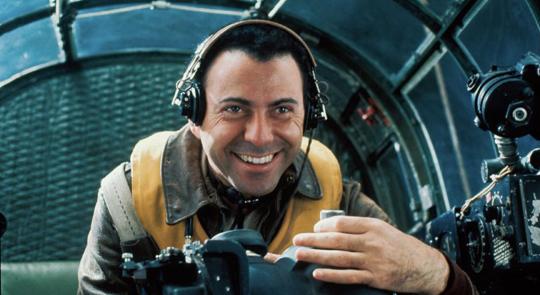
Alan Arkin, who has died aged 89, was a star at the beginning of his career and a beloved character actor until the end. Though best known for comedies, most notably Catch-22 (1970) and Little Miss Sunshine (2006), lightness was not necessarily his forte; even at his funniest, he exuded gravitas. “I’ve studied acting seriously,” he said in 1982. “I’m not the clown who wants to be Hamlet or anything like that. I just think that regarding oneself as comic means that one’s primary obligation is to get laughs.”
He could be a prickly figure. “Alan does not meet you halfway as an actor,” said the writer-director Marshall Brickman, who cast him as a brainwashed scientist in the science-fiction comedy Simon (1980). “He’s a very serious actor. I think he’s brilliant. But he’s not interested in winning you over via personality. The way he photographs has a kind of austerity that’s a little hard for an audience to take. You either like Alan or you don’t.” The Oscar Arkin won for playing a heroin-snorting grandfather in Little Miss Sunshine ratified his status as a US national treasure.
Arkin was born and raised in Brooklyn, New York, the son of Beatrice (nee Wortis) and David Arkin, both schoolteachers. As a child, he attended acting classes. The family moved to Los Angeles when Alan was 11, but trouble befell the family when David was accused of communist affiliations (disproved posthumously) during the McCarthy era.
Alan studied acting at Los Angeles State College of Applied Arts and Sciences (now California State University, Los Angeles) before transferring to Bennington College, Vermont. In 1955, he married Jeremy Yaffe, and became active in the folk music scene. Along with fellow members of his group, the Tarriers, he was credited as co-writer of The Banana Boat Song (Day-O), an adaptation of a Jamaican folk standard. (A different version was a hit for Harry Belafonte.)
After an inauspicious film debut with the Tarriers in Calypso Heat Wave (1957), he threw in his lot with acting. He made his off-Broadway debut in the late 1950s and joined the Chicago improvisational group the Compass Players in 1959. This led to a stint with the Chicago improv troupe Second City and his Broadway debut, in 1961, in the company’s show From the Second City, which he co-wrote.
Arkin did not forgo folk music entirely: he formed the children’s group the Babysitters, which also featured Yaffe until their divorce. The band was later joined by his second wife, the actor and writer Barbara Dana, whom he married in 1964.
He left Second City after landing the lead on Broadway in a 1963 production, Enter Laughing, for which he won a Tony award. In the same year, he wrote, scored and starred in the Oscar-nominated short film That’s Me. Norman Jewison gave him his first major film role in The Russians Are Coming, The Russians Are Coming (1966), a comic take on cold war paranoia. Arkin received an Oscar nomination for his performance as a lieutenant on a Soviet submarine that runs aground in New England.
His range was indisputable. Comparisons to Peter Sellers abounded even before Arkin took the title role in the misguided, off-piste comedy Inspector Clouseau (1968). He accepted a rare villainous part in Wait Until Dark (1967), terrorising a blind Audrey Hepburn. In the same year, he played one of Shirley MacLaine’s lovers in Vittorio de Sica’s portmanteau film Woman Times Seven. He won a second Oscar nomination for playing a deaf man in The Heart Is a Lonely Hunter (1968), adapted from the novel by Carson McCullers, and starred as a Puerto Rican widower raising his children in Popi (1969).
His landmark role came when he was cast as the anxious bombardier Yossarian in Mike Nichols’s film of Joseph Heller’s Catch-22. The New York Times critic Vincent Canby summed up Arkin’s appeal: “[He] is not a comedian; he is a deadly serious actor, but because he projects intelligence with such monomaniacal intensity, he is both funny and heroic at the same time.” The eight-month shoot was an arduous experience for the actor. “If they had shot footage of the making of the film,” he said, “it would’ve been a hell of a lot closer to the book than the movie was.”
Arkin had already directed several shorts when he embarked on his full-length directing debut, an adaptation of Jules Feiffer’s blackly comic play Little Murders (1971), set in a fractured and hostile New York City. The film’s critical reputation has grown steadily along with that of Arkin’s follow-up, Fire Sale (1977). Both pictures exhibit an acidic, rueful comic tone consistent with the mood of 1970s independent cinema.
In the same decade, Arkin played a long-distance truck driver in Deadhead Miles (1972), scripted by Terrence Malick; unsure how to market this eccentric road movie, Paramount shelved it, though it has surfaced occasionally on television. He teamed up with James Caan in the action comedy Freebie and the Bean (1974), with Peter Falk in The In-Laws (1979) and with Jeff Bridges in the 1930s-set Hearts of the West (1975). In The Seven-Per-Cent Solution (1977), he played Sigmund Freud, who welcomes Sherlock Holmes (Nicol Williamson) as a patient. He was a washed-up superhero in the Australian musical comedy The Return of Captain Invincible (1983) and a concentration camp prisoner in Escape from Sobibor (1987).
During the 1990s, Arkin’s movie career began its second flourishing. He specialised in sympathetic father figures in Coupe de Ville and Edward Scissorhands (both 1990) and Slums of Beverly Hills (1998), and played a desperate salesman in Glengarry Glen Ross (1992), the film of David Mamet’s play. He was also memorable as an assassin’s psychiatrist in Grosse Pointe Blank (1997). An acclaimed performance as a troubled insurance manager in Thirteen Conversations About One Thing (2001) attracted further awards.
The independent smash Little Miss Sunshine exploited Arkin’s contradictory qualities of coarseness and warmth. After that, most of his films felt minor: in 2008 he delivered another beneficent father routine in Sunshine Cleaning and a helping of spy antics in Get Smart, and was a twinkly editor in the family hit Marley & Me. More challenging was Rebecca Miller’s drama The Private Lives of Pippa Lee (2009), in which Arkin played a man married to a woman 30 years his junior. His fond portrayal of a grizzled movie producer in Argo (2012), Ben Affleck’s thriller set during the Iran hostage crisis, was hugely admired and was nominated for a best supporting actor Oscar.
He starred with Al Pacino and Christopher Walken as ageing crooks reuniting for one last job in Stand Up Guys (2012), and with Michael Caine and Morgan Freeman as retirees who plot to rob a bank after losing their pensions in Going in Style (2017). He was also in Tim Burton’s live-action remake of Dumbo (2019) and played a Hollywood agent in the Netflix series The Kominsky Method (2019) with Michael Douglas.
In 2020, he published Out of My Mind, which detailed his 20-year friendship with his spiritual mentor John Battista, though Battista’s full name is not mentioned in the book, nor his fall from grace (Battista was charged with the sexual abuse of several women and one girl) and suicide. The scandal caused a kind of paralysis in Arkin for six months, he told the Guardian in 2020. “But I doggedly went on and I’m glad that I did.”
He is survived by his third wife, Suzanne Newlander, whom he married in 1996, two sons, Adam and Matthew, from his first marriage, and a son, Anthony, from his second marriage.
🔔 Alan Wolf Arkin, actor and director, born 26 March 1934; died 29 June 2023
Daily inspiration. Discover more photos at http://justforbooks.tumblr.com
20 notes
·
View notes
Text
betteridge's law applies, but
honestly this was a pretty fun read just for the goofy historiography of What Various Fields (At Various Times) Have Proclaimed Early Humans Are Like, complete with e.g. goofy projection by 1950s anthropologists:
The notion of the meat-loving ancestor has a history. In the nineteen-fifties, the anatomist Raymond Dart, famous for discovering the first authentic fossil of an early African hominin, advanced what became known as the “killer ape” theory. Hunting, Dart thought, made us human. Our furry forebears climbed down from the trees to gorge on “the more attractive fleshy food that lay in the vast savannahs of the southern plains,” he wrote in the book “Adventures with the Missing Link” (1959). Elsewhere, he described the earliest hominins as “confirmed killers: carnivorous creatures that seized their quarries by violence, battered them to death, tore apart their broken bodies, dismembered them limb from limb, slaking their ravenous thirst with the hot blood of victims and greedily devouring livid writhing flesh.” The killer-ape theory seeped into the mainstream. In 1955, Dart, then based at the University of the Witwatersrand, met the playwright Robert Ardrey, who was in South Africa for a reporting trip. Like a convert seeing the holy truth, Ardrey came away transformed. He was convinced that “the predatory transition” not only made us human but also explained what he described as “man’s bloody history, his eternal aggression, his irrational, self-destroying inexorable pursuit of death for death’s sake.” Ardrey was inspired to write the “Nature of Man” series, a set of books about human nature and evolution, published between 1961 and 1976. Time later named “African Genesis,” the first in the series, the most notable nonfiction book of the sixties. It was cited as an influence on Stanley Kubrick’s film “2001: A Space Odyssey” (1968), whose opening sequence showed primate violence as a turning point in the development of our species.
8 notes
·
View notes